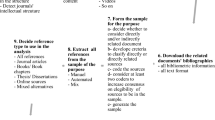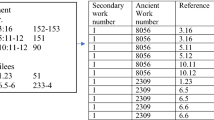Abstract
This paper proposes keyword-citation-keyword (KCK) network to analyze the knowledge structure of a discipline. Different from traditional co-word network analysis, KCK network highlights the importance of keywords assigned in different articles, as well as the semantic relationship between keywords in various articles. In this study, we select computer science domain as an example to illustrate the proposed method. Meanwhile, the results of network analysis, PageRank analysis, and research topic analysis are compared with those of traditional co-word analysis. A total of 110,360 articles with 164,146 unique keywords and 1,615,030 references collected from ACM digital library have been used for this empirical study. The results demonstrate that KCK network outperforms in detecting indirect links between keywords with higher semantic relationship, identifying important knowledge units, as well as discovering the topics with greater significance. Findings from this study contribute to a new perspective and understanding for elucidating discipline knowledge structures, and provide guidance for applying this method in various disciplines.





Similar content being viewed by others
References
Alstott, J., Bullmore, D. P., & Plenz, D. (2014). powerlaw: A Python package for analysis of heavy-tailed distributions. PLoS ONE,9(1), e85777.
An, X. Y., & Wu, Q. Q. (2011). Co-word analysis of the trends in stem cells field based on subject heading weighting. Scientometrics,88(1), 133–144.
Bastian, M., Heymann, S., & Jacomy, M. (2009). Gephi: An open source software for exploring and manipulating networks. In Proceedings of the 3rd international AAAI conference on weblogs and social media, May 17–19, 2009, San Jose, CA, USA (pp. 361–362).
Blondel, V. D., Guillaume, J. L., Lambiotte, R., & Lefebvre, E. (2008). Fast unfolding of communities in large networks. Journal of Statistical Mechanics: Theory and Experiment,2008(10), P10008.
Bornmann, L., Haunschild, R., & Hug, S. E. (2018). Visualizing the context of citations referencing papers published by Eugene Garfield: A new type of keyword co-occurrence analysis. Scientometrics,114(2), 427–437.
Braam, R. R., Moed, H. F., & Van Raan, A. F. J. (1991). Mapping of science by combined co-citation and word analysis I. Structural aspects. Journal of the American Society for Information Science and Technology,42(4), 233–251.
Brin, S., & Page, L. (1998). The anatomy of a large-scale hypertextual Web search engine. In Proceedings of the 7th international conference on world wide web, April 14–18, 1998, Brisbane, Australia.
Bu, Y., Wang, B., Huang, W.-B., Che, S., & Huang, Y. (2018). Using the appearance of citations in full text on author co-citation analysis. Scientometrics,116(1), 275–289.
Callon, M., Courtial, J. P., & Laville, F. (1991). Co-word analysis as a tool for describing the network of interactions between basic and technological research: The case of polymer chemistry. Scientometrics,22(1), 155–205.
Callon, M., Courtial, J. P., Turner, W. A., & Bauin, S. (1983). From translations to problematic networks: An introduction to co-word analysis. Social Science Information,22(2), 191–235.
Chandra, Y. (2018). Mapping the evolution of entrepreneurship as a field of research (1990–2013): A scientometric analysis. PLoS ONE,13(1), e0190228.
Chen, C. (2006). CiteSpace II: Detecting and visualizing emerging trends and transient patterns in scientific literature. Journal of the American Society for Information Science and Technology,57(3), 359–377.
Chen, C., Song, M., & Heo, G. E. (2018). A scalable and adaptive method for finding semantically equivalent cue words of uncertainty. Journal of Informetrics,12(1), 158–180.
Chen, G., & Xiao, L. (2016). Selecting publication keywords for domain analysis in bibliometrics: A comparison of three methods. Journal of Informetrics,10(1), 212–223.
Cobo, M. J., López-Herrera, A. G., Herrera-Viedma, E., & Herrera, F. (2011). Science mapping software tools: Review, analysis, and cooperative study among tools. Journal of the American Society for Information Science and Technology,62(7), 1382–1402.
Dakiche, N., Benbouzid-Si Tayeb, F., Slimani, Y., & Benatchba, K. (2019). Tracking community evolution in social networks: A survey. Information Processing and Management,56(3), 1084–1102.
das Neves Machado, R., Vargas-Quesada, B., & Leta, J. (2016). Intellectual structure in stem cell research: Exploring Brazilian scientific articles from 2001 to 2010. Scientometrics,106(2), 525–537.
Ding, Y., Song, M., Han, J., Yu, Q., Yan, E., Lin, L., et al. (2013). Entitymetrics: Measuring the impact of entities. PLoS ONE,8(8), e71416.
Feng, J., Zhang, Y. Q., & Zhang, H. (2017). Improving the co-word analysis method based on semantic distance. Scientometrics,111(4), 1–11.
Fortunato, S., Bergstrom, C. T., Börner, K., Evans, J. A., Helbing, D., Milojević, S., et al. (2018). Science of science. Science,359(6379), eaao0185.
Garfield, E. (1964). Can citation indexing be automated? In M. E. Stevens, V. E. Giuliano, & L. B. Heilprin (Eds.), Statistical association methods for mechanized documentation: Symposium proceedings Washington 1964 (pp. 189–192). Department of Commerce National Bureau of Standards.
He, Q., Chen, B., Pei, J., Qiu, B., Mitra, P., & Giles, L. (2009). Detecting topic evolution in scientific literature: How can citations help? In Proceedings of the 18th ACM conference on information and knowledge management, November 2-6, 2009, Hong Kong, China (pp. 957–966).
Hooper, R. P. (2009). Towards an intellectual structure for hydrologic science. Hydrological Processes,23(2), 353–355.
Hou, J., Yang, X., & Chen, C. (2018). Emerging trends and new developments in information science: A document co-citation analysis (2009–2016). Scientometrics,115(2), 869–892.
Hu, J., & Zhang, Y. (2015). Research patterns and trends of recommendation system in china using co-word analysis. Information Processing and Management,51(4), 329–339.
Huang, M. H., & Chang, C. P. (2014). Detecting research fronts in OLED field using bibliographic coupling with sliding window. Scientometrics,98(3), 1721–1744.
Khasseh, A. A., Soheili, F., Moghaddam, H. S., & Chelak, A. M. (2017). Intellectual structure of knowledge in iMetrics: A co-word analysis. Information Processing and Management,53(3), 705–720.
Leskovec, J., Lang, K. J., Dasgupta, A., & Mahoney, M. W. (2008). Statistical properties of community structure in large social and information networks. In Proceedings of the 17th international conference on the world wide web, April 21-25, 2008, Beijing, China (pp. 695–704).
Li, L. L., Ding, G., Feng, N., Wang, M. H., & Ho, Y. S. (2009). Global stem cell research trend: Bibliometric analysis as a tool for mapping of trends from 1991 to 2006. Scientometrics,80(1), 39–58.
Li, S., & Sun, Y. (2013). The application of weighted co-occurring keywords time gram in academic research temporal sequence discovery. In Proceeding of the 76th ASIS&T annual meeting: Beyond the cloud: Rethinking information boundaries, November 1–5, 2013, Montreal, Quebec, Canada.
Lipetz, B. A. (1965). Improvement of the selectivity of citation indexes to science literature through inclusion of citation relationship indicators. Journal of the Association for Information Science and Technology,16(2), 81–90.
Liu, G. Y., Hu, J. M., & Wang, H. L. (2012). A co-word analysis of digital library field in china. Scientometrics,91(1), 203–217.
Lu, W., Huang, Y., Bu, Y., & Cheng, Q. (2018). Functional structure identification of scientific documents in computer science. Scientometrics,115(1), 463–486.
Malin, M. V. (1968). The science citation indexR: A new concept in indexing. Library Trends,16, 374–387.
Mathieu, J., Tommaso, V., Sebastien, H., & Mathieu, B. (2014). Forceatlas2, a continuous graph layout algorithm for handy network visualization designed for the Gephi software. PLoS ONE,9(6), e98679.
Morris, S. A., Yen, G., Wu, Z., & Asnake, B. (2003). Timeline visualization of research fronts. Journal of the Association for Information Science and Technology,54(5), 413–422.
Narin, F. (1976). Evaluative bibliometrics: The use of publication and citation analysis in the evaluation of scientific activity (p. 334, 337). Cherry Hill: Computer Horizons Inc.
Newman, M. E. J. (2004). Fast algorithm for detecting community structure in networks. Physical Review E: Statistical, Nonlinear, and Soft Matter Physics,69(6 Pt 2), 066133.
Newman, M. (2010). Networks: An introduction. Oxford: Oxford University Press.
Ravikumar, S., Agrahari, A., & Singh, S. N. (2015). Mapping the intellectual structure of scientometrics: A co-word analysis of the journal scientometrics (2005–2010). Scientometrics,102(1), 929–955.
Sedighi, M. (2016). Application of word co-occurrence analysis method in mapping of the scientific fields (case study: The field of informetrics). Library Review,65(1/2), 52–64.
Sluyter, A., Augustine, A. D., Bitton, M. C., Sullivan, T. J., & Wang, F. (2006). The recent intellectual structure of geography. Geographical Review,96(4), 594–608.
Song, M., Han, N. G., Kim, Y. H., Ding, Y., & Chambers, T. (2013). Discovering implicit entity relation with the gene-citation-gene network. PLoS ONE,8(12), e84639.
Song, M., & Kim, S. Y. (2013). Detecting the knowledge structure of bioinformatics by mining full-text collections. Scientometrics,96(1), 183–201.
Su, H. N., & Lee, P. C. (2010). Mapping knowledge structure by keyword co-occurrence: A first look at journal papers in technology foresight. Scientometrics,85(1), 65–79.
Sun, X., Ding, K., & Lin, Y. (2016). Mapping the evolution of scientific fields based on cross-field authors. Journal of Informetrics,10(3), 750–761.
Sun, Y. W., & Zhai, Y. (2018). Mapping the knowledge domain and the theme evolution of appropriability research between 1986 and 2016: A scientometric review. Scientometrics,116(1), 203–230.
Uddin, A., Singh, V. K., Pinto, D., & Olmos, I. (2015). Scientometric mapping of computer science research in Mexico. Scientometrics,105(1), 97–114.
Wang, X., Cheng, Q., & Lu, W. (2014). Analyzing evolution of research topics with NEViewer: A new method based on dynamic co-word networks. Scientometrics,101(2), 1253–1271.
Wang, H., Deng, S., & Su, X. (2016). A study on construction and analysis of discipline knowledge structure of Chinese LIS based on CSSCI. Scientometrics,109(3), 1725–1759.
Wang, Z. Y., Li, G., Li, C. Y., & Li, A. (2012). Research on the semantic-based co-word analysis. Scientometrics,90(3), 855–875.
Yan, B. N., Lee, T. S., & Lee, T. P. (2015). Mapping the intellectual structure of the Internet of Things (IoT) field (2000–2014): A co-word analysis. Scientometrics,105(2), 1285–1300.
Zhang, W., Zhang, Q., Yu, B., & Zhao, L. (2015). Knowledge map of creativity research based on keywords network and co-word analysis, 1992–2011. Quality and Quantity,49(3), 1023–1038.
Zhao, W., Mao, J., & Lu, K. (2018). Ranking themes on co-word networks: Exploring the relationships among different metrics. Information Processing and Management,54(2), 203–218.
Zhu, Y., Song, M., & Yan, E. (2016). Identifying liver cancer and its relations with diseases, drugs, and genes: A literature-based approach. PLoS ONE,11(5), e0156091.
Zhu, X., Turney, P., Lemire, D., & Vellino, A. (2015). Measuring academic influence: Not all citations are equal. Journal of the Association for Information Science and Technology,66(2), 408–427.
Acknowledgements
This work was partially supported by Major Projects of National Social Science Foundation of China (No. 17ZDA292) and National Natural Science Foundation of China (No.71704137).
Author information
Authors and Affiliations
Corresponding author
Rights and permissions
About this article
Cite this article
Cheng, Q., Wang, J., Lu, W. et al. Keyword-citation-keyword network: a new perspective of discipline knowledge structure analysis. Scientometrics 124, 1923–1943 (2020). https://doi.org/10.1007/s11192-020-03576-5
Received:
Published:
Issue Date:
DOI: https://doi.org/10.1007/s11192-020-03576-5




